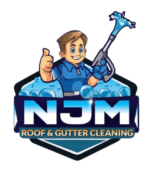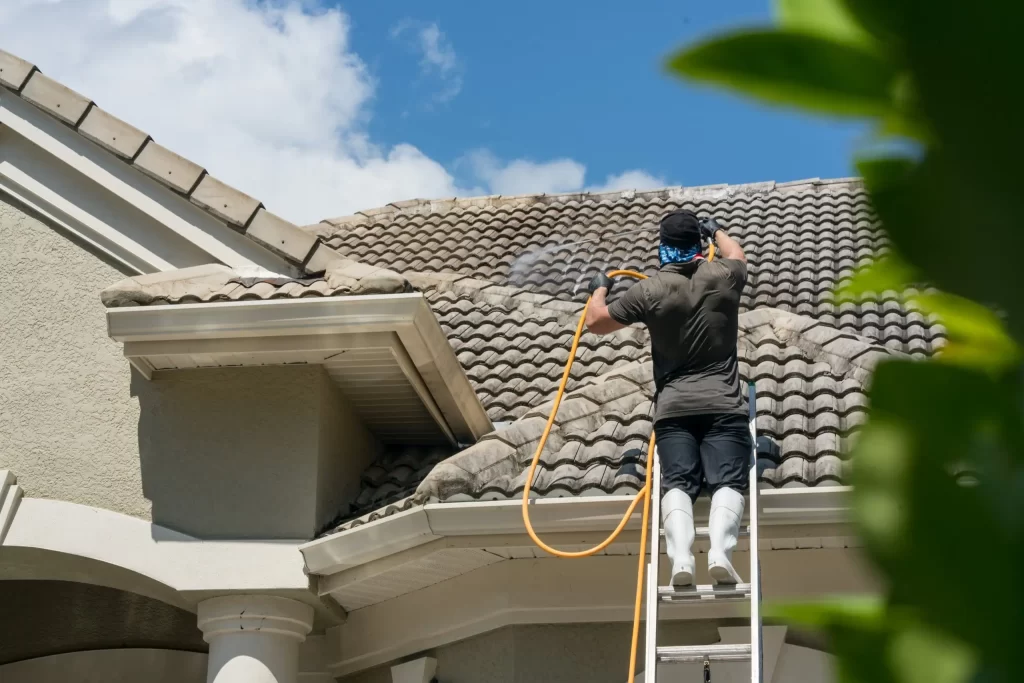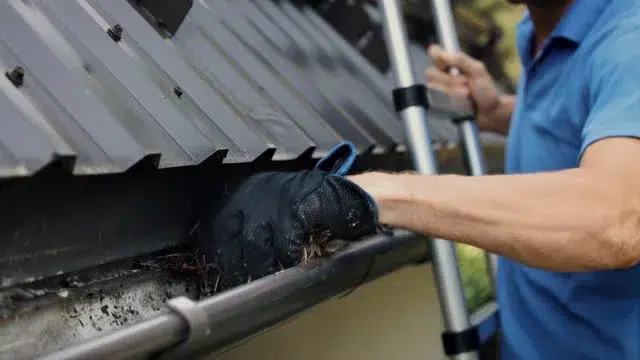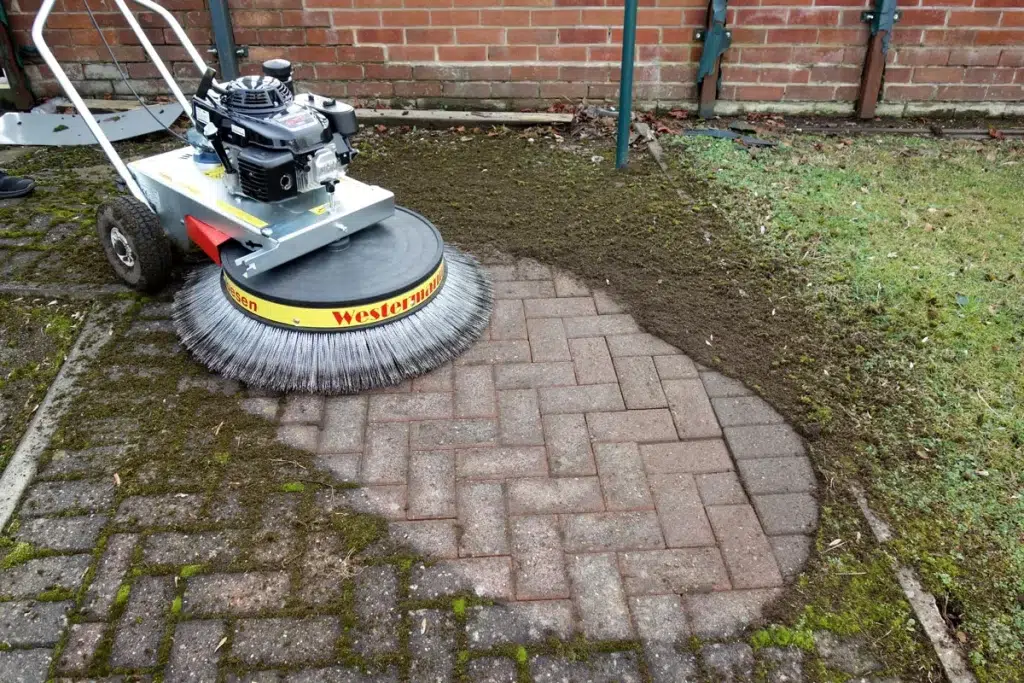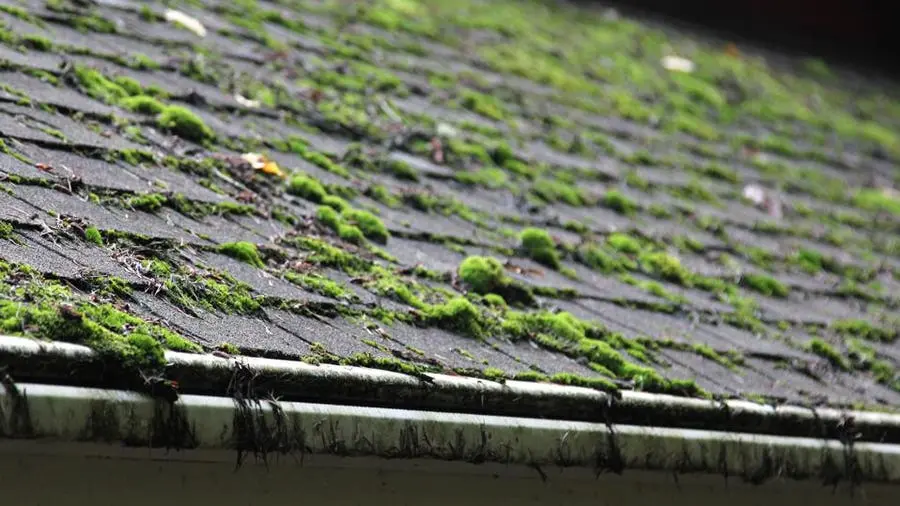
Did you know that your roof has an enemy? A sneaky green invader that can silently cause roof damage over time? We’re talking about moss on roof. Yes, that innocent-looking green fuzz might seem harmless, but it can damage your roof if left unchecked.
Moss might look charming on a forest floor or in a fairy garden, but when it decides to make your roof its new home, it’s a different story. Moss on the roof can cause significant damage, leading to costly repairs. For homeowners trying to keep their house in good condition, this guide is for you. We’ll walk you through the impact of moss on your roof, how to prevent it, and most importantly, how to remove it.
Covered In This Article
What is Moss?
Moss is a small, non-vascular plant that typically grows in dense, green clumps. Unlike most plants, moss doesn’t have roots, stems, or leaves as we know them. Instead, it absorbs water and nutrients directly through its cells, which allows it to thrive in damp, shady environments. Moss can grow on a variety of surfaces, including soil, rocks, trees, and, unfortunately for homeowners, roofs.
The Impact of Moss on Your Roof
You might be wondering, “What’s the big deal with a little green on my roof?” Well, that “little green” can become a big problem. Moss might seem harmless or even aesthetically pleasing in the right context, but when it starts growing on your roof, it can lead to several significant issues:
1. Structural Damage
Moss thrives in damp, shady environments, and your roof might just be its perfect habitat. When moss starts to grow on your roof, it holds moisture against the shingles. Over time, this can lead to:
- Shingle Damage: The constant moisture can cause shingles to curl, crack, or even lift, making your roof less effective at keeping out the elements.
- Wood Rot: If moss growth is left unchecked, the moisture can seep into the underlying wood structure, leading to rot and weakening the roof’s integrity.
- Ice Dams: In colder climates, the presence of moss can contribute to the formation of ice dams, which can cause further damage by preventing proper drainage.
2. Aesthetics and Curb Appeal
While some might find a moss-covered roof attractive, it’s generally considered unsightly and can lower your home’s curb appeal. This can be particularly problematic if you’re planning to sell your home—potential buyers might see the moss as a sign of neglect and a red flag for future issues.
3. Increased Maintenance Costs
Dealing with moss on roof isn’t just a one-time hassle. If you don’t take preventive measures, you could find yourself repeatedly paying for repairs or professional cleanings. Worse still, if moss damage goes too far, you could be looking at a full roof replacement.
How to Prevent Moss on Your Roof
The best way to deal with moss is to prevent it from growing in the first place. Here are some practical steps you can take:
1. Keep Your Roof Clean and Debris-Free
Leaves, branches, and other debris can trap moisture on your roof, creating an ideal environment for moss to grow. Regularly clean your roof to prevent buildup.
- Trim Overhanging Branches: This allows more sunlight to reach your roof, helping to keep it dry.
- Clear Debris Promptly: Use a roof rake or leaf blower to remove leaves and other debris.
- Clean Your Gutters: A clogged gutter can lead to water backing up onto your roof, creating the perfect conditions for moss. Make gutter cleaning part of your regular home maintenance routine.
2. Install Zinc or Copper Strips
Zinc or copper strips installed along the roof ridge can help prevent moss growth. When it rains, small amounts of metal are released, which are toxic to moss and prevent it from spreading.
3. Apply a Moss-Resistant Roof Treatment
There are commercial treatments available that can be applied to your roof to make it resistant to moss growth. These treatments typically need to be reapplied every few years.
How to Remove Moss on Your Roof: Step-By-Step Guide
If moss has already taken hold of your roof, don’t panic! Here’s a step-by-step guide on how to remove it safely and effectively:
1. Prep Your Moss Removal Tools
You’ll need:
- A ladder
- Safety gear (gloves, non-slip shoes, and eye protection)
- A roof harness (for added safety)
- A soft-bristle brush or a moss-removal tool
- A garden hose with a spray nozzle
- A moss-removal solution (store-bought or homemade)
2. Apply the Moss-Removal Solution
There are plenty of moss-removal solutions available, but you can also make a simple one at home using:
1 part chlorine bleach to 4 parts water, or1 part white vinegar to 4 parts water (for a more eco-friendly option)
Apply the solution to the mossy areas using a garden sprayer. Be sure to soak the moss thoroughly, but avoid oversaturating your roof as this could lead to water damage.
3. Let the Solution Sit
Allow the solution to sit on the moss for 15-20 minutes. This will help to kill the moss and loosen its grip on your shingles.
4. Gently Scrub the Moss Off
Using your soft-bristle brush, gently scrub the moss off the roof. Start at the top and work your way down to avoid lifting shingles. Be careful not to scrub too hard—you don’t want to damage the shingles.
5. Rinse the Roof
After scrubbing, use a garden hose to rinse the roof thoroughly. Avoid using a pressure washer, as the high pressure can damage your shingles and push water underneath them.
6. Inspect and Repeat If Necessary
After rinsing, inspect your roof to see if any moss remains. If needed, repeat the process until all the moss is removed.
Conclusion
Moss on roof might seem like a minor issue at first glance, but when it comes to your roof, it can lead to significant problems if left unchecked. From moisture retention and shingle damage to potential structural issues and decreased curb appeal, the impact of moss on your roof is far-reaching. However, with the right preventive measures and removal techniques, you can keep your roof moss-free and in excellent condition.
Whether you’re a DIY enthusiast ready to tackle the task or a homeowner considering professional help, taking action now can save you from costly repairs down the line. Regular roof maintenance, along with the tips provided in this guide, will ensure your roof remains strong, durable, and looking great for years to come. So, don’t wait—give your roof the care it needs to stay pristine and moss-free!
Frequently Asked Questions
Should I worry about moss on my roof?
Yes, moss can cause damage by trapping moisture, which can lead to shingle deterioration, wood rot, and reduced roof lifespan.
How to stop moss from growing?
Regularly clean your roof, ensure good sunlight exposure, and apply a moss-resistant treatment to prevent growth.
How do I get rid of moss on my roof?
Apply a moss-removal solution, let it sit, then gently scrub off the moss and rinse the roof thoroughly.
How do I protect my roof from moss?
Keep your roof clean and free of debris, trim overhanging branches, and consider installing zinc or copper strips to prevent moss growth.
Does vinegar remove moss?
Yes, a mixture of vinegar and water can effectively kill and remove moss from your roof in an eco-friendly way.
